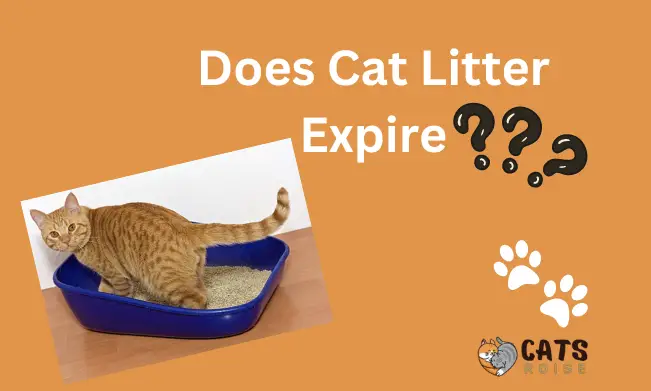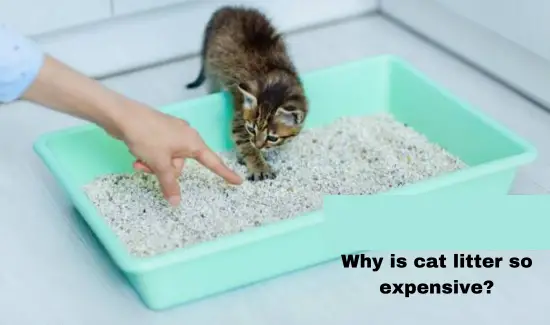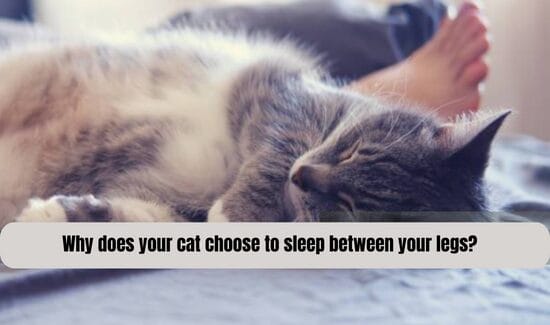When it comes to the question of whether or not you can flush cat litter down the toilet, it is crucial to consider several factors. Firstly, it is important to note that flushing cat litter down the toilet is generally not recommended by experts in plumbing and environmental conservation.
Cat litter typically consists of materials such as clay or silica, which do not readily dissolve in water and can potentially clog your pipes over time.
Furthermore, many commercial cat litters contain additives like deodorants or chemicals that could be harmful when introduced into wastewater systems.
Additionally, some types of cat litter are made from substances like sodium bentonite clay, which expands when exposed to moisture and could further contribute to pipe blockages.
Introduction to flushing cat litter down the toilet
As cat owners, we all know the daily chore of cleaning out our furry feline’s litter box. It can be a messy and unpleasant task, which is why many pet owners have wondered if there is an easier way to dispose of their cat’s waste. One popular method that has been gaining attention is flushing cat litter down the toilet.
But before you grab your bag of litter and head to the bathroom, let’s take a closer look at this practice and whether it is safe for both your plumbing system and the environment.
Firstly, it’s important to understand that not all types of cat litter are created equal. Some are specifically designed to be flushable, while others may contain materials that can clog or damage pipes. It’s crucial to always check the packaging or contact the manufacturer to confirm if your cat litter is safe for flushing.
Furthermore, even if your cat litter brand claims to be flushable, it doesn’t mean it will biodegrade quickly in water.
Cat waste can contain harmful bacteria that can contaminate water sources and harm marine life. Therefore, it’s essential to only use environmentally friendly options when considering flushing cat litter down the toilet.
Another factor to consider is your home’s plumbing system. Flushing large amounts of any kind of material down the toilet can cause clogs and blockages in pipes over time. This includes clumping clay litters or non-flushable natural options like pine pellets or corn-based litters.
Understanding the Dangers of Flushing Cat Litter
While it may seem convenient to flush cat litter down the toilet, it is actually quite dangerous for both your plumbing system and the environment. In this section, we will discuss the potential dangers of flushing cat litter and why it’s important to find alternative methods of disposal.
1. Potential Damage to Your Plumbing System
Flushing cat litter down the toilet can cause serious damage to your plumbing system. Contrary to popular belief, not all cat litters are designed to dissolve in water. Some are made from materials such as clay or silica that do not break down easily and can clog your pipes over time.
Additionally, clumping litters absorb moisture and expand when flushed, which can lead to blockages in your sewer lines. This can result in costly repairs and backups in your home’s plumbing system.
2. Harmful for Marine Life
Cat waste contains a parasite called Toxoplasma gondii, which is harmful to marine life. When flushed down the toilet, these parasites enter our waterways and oceans where they can infect marine animals like dolphins, sea otters, and seals.
These animals can become sick or even die from exposure to toxoplasmosis. It also poses a risk for humans who consume seafood contaminated with these parasites.
3. Negative Impact on Water Quality
Cat litter often contains chemicals and additives that are harmful if they enter our water supply through flushing. These chemicals can contaminate our drinking water
Types of cat litter that can and cannot be flushed
There are many different types of cat litter on the market, and as a pet owner, it is important to know which ones can and cannot be flushed down the toilet. In this section, we will discuss the various types of cat litter and their flushability.
1. Clay-Based Cat Litter:
Most traditional cat litters are made from clay, which is highly absorbent and clumps together when wet. While this type of litter may seem like an easy option for flushing, it should never be flushed down the toilet. Clay-based litters can quickly clog your pipes and cause significant damage to your plumbing system.
2. Clumping Cat Litter:
This type of litter is similar to clay-based litters in that it forms clumps when exposed to moisture. These clumps can also lead to serious plumbing issues if flushed down the toilet. Additionally, some clumping cat litters contain sodium bentonite, which expands when wet and can cause blockages in your pipes.
3. Silica Gel Crystals:
Silica gel crystal litters are becoming increasingly popular due to their superior absorption capabilities and low dust levels. However, these crystals do not break down in water like other types of litter do, making them unsuitable for flushing.
4. Pine or Cedar Shavings:
These natural-based litters are often marketed as being flushable because they biodegrade easily in nature. However, they should still not be flushed down the toilet as they can still cause clogs in your
Risks to your plumbing and the environment
Flushing cat litter down the toilet may seem like a quick and convenient way to dispose of your pet’s waste, but it can actually pose risks to both your plumbing and the environment. In this section, we will discuss the potential dangers of flushing cat litter down the toilet and how it can impact both your home and the world around us.
1. Clogging and Blockages
One of the main reasons why flushing cat litter down the toilet is not recommended is because it can cause serious clogs and blockages in your plumbing system. Cat litter is designed to clump when exposed to moisture, making it difficult for water to pass through pipes smoothly. As a result, it can easily get stuck in pipes, leading to backups and potentially expensive repairs.
2. Damage to Sewer Systems
In addition to causing issues within your own plumbing system, flushing cat litter can also have a negative impact on public sewer systems.
When flushed down the toilet, cat litter travels through pipes until it reaches larger sewer lines that are not designed for handling solid materials. This can lead to blockages in municipal sewer systems, causing sewage backups and environmental hazards.
3. Harmful Chemicals
Most traditional cat litters contain chemicals such as silica dust or sodium bentonite which are used for odor control or clumping purposes. These chemicals are not biodegradable and can harm aquatic life if they make their way into bodies of water through sewage leaks or overflow events.
Alternatives to flushing cat litter down the toilet
There are a few reasons why flushing cat litter down the toilet may not be the best option for disposing of your furry friend’s waste. It also poses a threat to the environment and public health.
Proper disposal methods for used cat litter are crucial not only for the maintenance of your plumbing system, but also for the protection of the environment. While flushing cat litter down the toilet may seem like an easy and convenient option, it is actually harmful to both your home’s pipes and the ecosystem.
Fortunately, there are several alternative methods for disposing of cat litter that are safe, convenient, and eco-friendly. Here are some options to consider:
1. Bagging and throwing it in the trash:
The first step in proper disposal of used cat litter is to scoop it into a plastic bag or container. This ensures that any solid waste is contained and does not leak out onto other surfaces or cause unpleasant odors. Make sure to use a bag that is strong enough to hold all of the litter without tearing.
Next, tie up the bag tightly and place it in your regular household trash bin. If possible, try to separate it from other types of waste such as food scraps or recyclables. This will help prevent any cross-contamination and make it easier for waste management facilities to handle.
2. Composting:
If you have a backyard or garden space, composting can be an excellent way to recycle your cat’s litter while also enriching your soil. You can use biodegradable or plant-based litters specifically designed for composting or mix traditional clay litters with organic materials such as leaves or sawdust.
3. Flushing biodegradable litter:
While traditional clay litters should never be flushed down the toilet due to their non-biodegradable nature, there are now many biodegradable options available on the market that claim to be safe for flushing. However, it is essential to note that even these products may still cause clogs in older plumbing systems or septic tanks.
Tips for keeping your litter box clean and odor-free without flushing
Keeping your litter box clean and odor-free is an important aspect of responsible cat ownership. However, flushing cat litter down the toilet can be harmful to both your plumbing system and the environment. So, what are some alternative ways to keep your litter box clean without resorting to flushing? Here are some tips:
1. Use a high-quality litter:
The type of litter you use can make a big difference in keeping your litter box clean and odor-free. Opt for a clumping or natural litter that is specifically designed for easy scooping and has good odor control properties.
2. Scoop daily:
One of the best ways to keep your litter box clean and fresh is by scooping it at least once a day. This will prevent waste from building up and reduce odors in the box.
3. Invest in a good quality scoop:
A sturdy, well-designed scoop can make all the difference when it comes to cleaning your litter box efficiently. Look for one with small holes that allow clean litter to sift through while trapping solid waste.
4. Use baking soda:
Baking soda is known for its ability to absorb odors, making it perfect for keeping your litter box smelling fresh. Sprinkle a thin layer of baking soda at the bottom of the tray before adding in new litter.
5. Try deodorizing additives:
There are various deodorizing additives available on the market that you can mix with your cat’s regular litter to help neutralize strong odors.
Conclusion: Weigh the Pros and Cons Before Deciding to Flush Your Cat Litter
While flushing cat litter down the toilet may seem like a convenient solution, it’s important to carefully consider both the pros and cons before making this decision. As discussed in this blog post, there are several factors to take into account when deciding whether or not to flush your cat litter. Let’s review them in more detail.
Pros of Flushing Cat Litter:
1. Convenience:
One of the main advantages of flushing cat litter is convenience. It eliminates the need for scooping and disposing of waste in a separate location, making cleaning up after your furry friend much easier.
2. Time-saving
Flushing cat litter can save you time as you don’t have to worry about regularly changing and maintaining a litter box. This can be especially helpful for busy pet owners who may not have enough time on their hands.
3. Cost-effective
Some types of flushable cat litters are designed to be cost-effective as they claim to last longer than traditional litters, reducing your overall expenses.
4. Environmental-friendly option
Certain biodegradable and Eco-friendly cat litters are specifically labeled as “flushable,” which means they can break down safely in septic systems or sewage treatment plants without causing harm to the environment.
Cons of Flushing Cat Litter:
1. Clogs and Blockages
Perhaps the most significant drawback of flushing cat litter is that it can cause clogs and blockages in your plumbing





[…] is a frequent can you flush cat litter down the toilet, and flushing cat litter is a common practice among cat owners. However, this method is not […]
Very amusing phrase
What charming answer
And you have understood?
yes off course